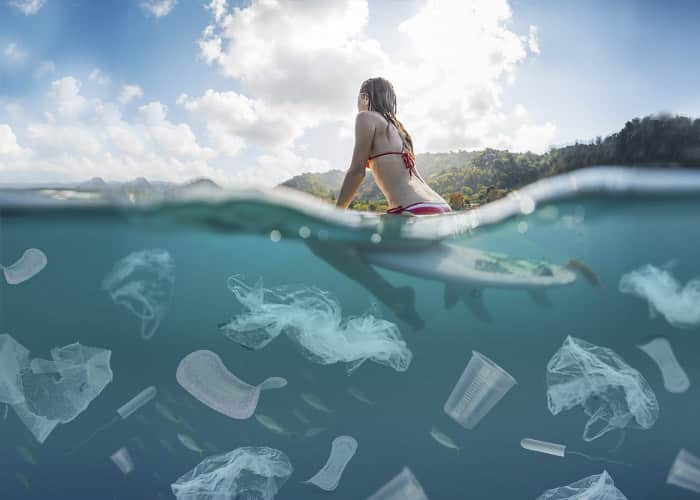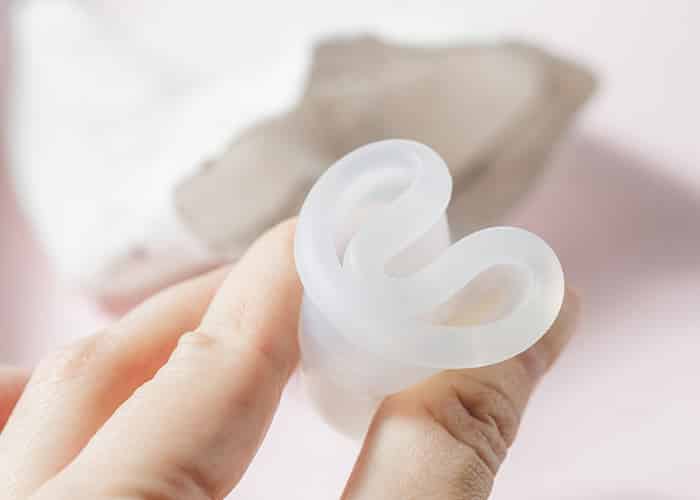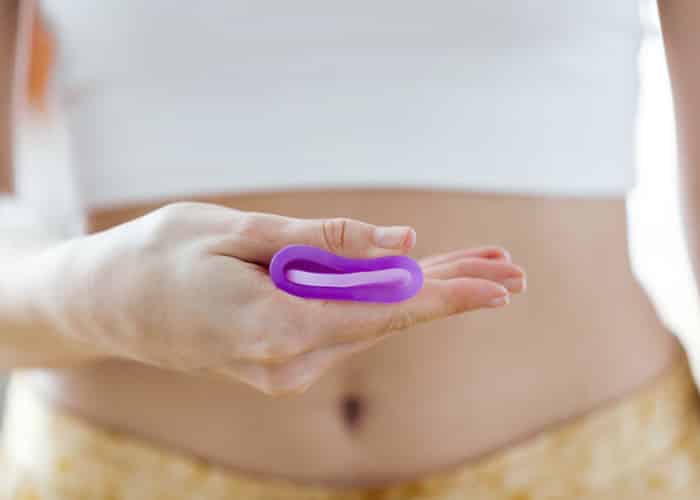Reducing plastic use and environmental campaigns are in vogue. Not using plastic bottles, rejecting plastic bags, saying goodbye to straws and much more are part of the worldwide campaign to leave these polymers behind. However, living plastic-free isn’t as easy as it seems, especially for the 50% of the world’s population that menstruates.
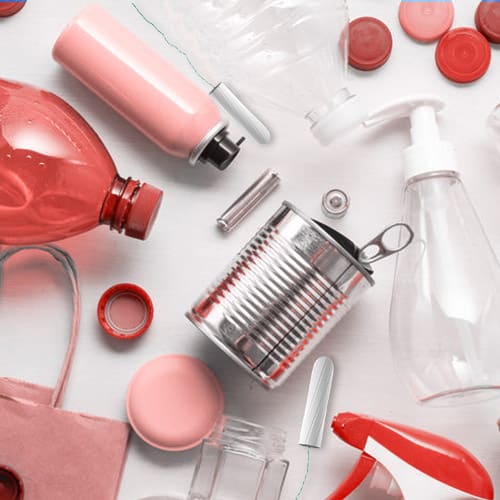
Plastic-free Living: How much plastic do we women use during our periods?
Let’s do some menstrual math. All women menstruate for at least 40 years of our lives. On average, each menstruation lasts for five days, more or less. For each day of our period, we use at least two sanitary pads or tampons.
We use an average of 10 menstrual hygiene products every month, which brings us to 120 pads and tampons each year. One hundred and twenty multiplied by 40 years of fertile life gives us about 4,800 tampons and/or pads discarded and accumulated for every woman!
For more than half a century, our periods have accumulated large quantities of waste. According to studies, about 20 billion sanitary napkins, tampons, and menstrual packaging build up annually on the North American coast.
Currently, a plastic island has been forming in the Pacific Ocean that covers an estimated area of 1.6 million square km–that is, three times the surface area of France and almost four times that of Spain–according to the academic research journal Nature. Ninety-nine percent of the trash found there are products derived from plastic.
We can’t stop menstruation, but we can make it more sustainable and try to live plastic-free. How? We’ll tell you later on.
What are menstrual products made of?
Due to advertisements boasting how gentle their menstrual items are, many women may ask themselves: aren’t my pads and tampons made of cotton?
Until recently, large companies that produce tampons, applicators, and sanitary napkins did not disclose the exact content of their items for menstrual hygiene. This is all because what mattered was not what they were made of, but rather the practicality of being able to discard these products after each use. There would be no need to see, touch, or wash anything.
However, due to the pressure from the increasingly aware public, large companies have had to reveal their essential ingredients: cotton, rayon, chlorine, polypropylene (pure plastic), polyethylene, polyacrylate, etc.
Despite being a natural product, cotton fields are usually treated with fertilizers and pesticides that have an impact on the environment. On the other hand, rayon is a synthetic textile that uses bleaching agents such as chlorine, which is directly associated with Toxic Shock Syndrome.
Polypropylene, polyester, and polyethylene are used in the different layers that allow your pad to receive and retain menstrual blood. Polyacrylate is the magic gel that gives the absorbent power to these products and is present in both pads and some tampons.
Many of these components are found in plastic bags in supermarkets and items such as reusable containers, but we know that, just like disposable diapers, pads and tampons can only be used once.
Tampons, which are made from cotton fibers, usually have a small layer of these polymers to keep the cotton in place. Also, the cord from which the tampon is pulled is usually made of polyethylene or polypropylene.
Besides, an investigation by the Royal Institute of Technology in Stockholm found that the main cause of global warming was the processing of low-density polyethylene, which is the component used in tampon applicators. This process requires a high generation of energy produced by fossil fuels.
How long does it take for menstrual products to break down?
As we have seen, pads and tampons are made of various materials.
Polymers such as polyethylene could take up to 150 years to decompose. Normally, it takes up to 1000 years for plastic to get rid of itself. The Menstrual Health Alliance of India states that for all the materials used, a sanitary pad could break down in an average of 500 to 800 years.
To this, we must also add the environmental impact and enormous carbon footprint left by the extraction of raw material, transport, manufacturing, and processing of these intimate hygiene products. In one year, the manufacturing of pads can produce the equivalent of 5.3 kg of carbon dioxide released into the atmosphere.
Another serious problem is that common plastic is not biodegradable. It puts seas and oceans at risk of becoming inhabitable by decomposing into microplastics which are then ingested by marine species.
Furthermore, these microparticles make the work of many environmental organizations–responsible for cleaning up the oceans and coasts–much more difficult, if not impossible.
How can we reduce our carbon footprint and make menstruation more sustainable?
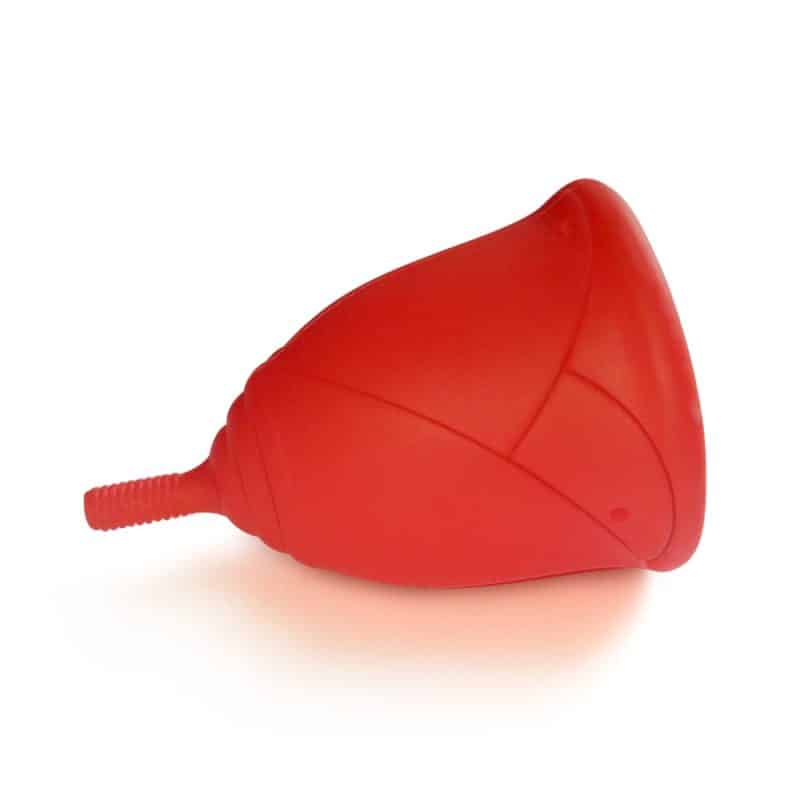
Menstrual cups are reusable for up to ten years. They are made of medical-grade silicone–a material based on silicon, oxygen, and other natural elements–and while not biodegradable, can be recycled. Many companies are responsible for manufacturing other silicone-based products.
This combines perfectly with theZero Waste life philosophy, which aims to reduce environmental impact and pollution from home. Additionally, unlike plastic derivatives that give off toxic, carcinogenic, and mutagenic substances, medical silicone is completely safe for the body.
Furthermore, as of November 2019, ourSileu Rose will be packed with a bag of biodegradable material known as PLA (polylactic acid), which is extracted from the glucose of plants such as corn. According to the European EN 13432 certification, it degrades within six months of coming into contact with the earth.
Similarly, our bags that store the cup will be made of 100% compostable organic cotton, under the GOTS (Global Organic Textile Standard) certification, which regulates the production of ecologically and socially sustainable textiles.
Another way to live plastic-free living on your period is by using pads made of reusable cloth. However, the menstrual cup still beat out the rest of the intimate hygiene products by reducing the carbon footprint needed for its production.
